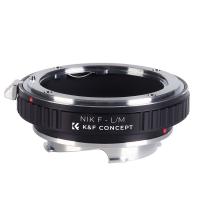Light Microscope How Is The Beam Focused ?
In a light microscope, the beam is focused using a combination of lenses. The process involves passing light through the specimen and a series of lenses to magnify and focus the image. The main lens responsible for focusing the beam is called the objective lens, which is located close to the specimen. By adjusting the position of the objective lens, the focal point of the beam can be changed, allowing for precise focusing of the image. Additionally, the condenser lens, located beneath the specimen, helps to concentrate and direct the light onto the specimen, further aiding in focusing the beam.
1、 Objective lens adjustment for focusing the beam
In a light microscope, the beam is focused through the adjustment of the objective lens. The objective lens is responsible for collecting and magnifying the light that passes through the specimen. By adjusting the position of the objective lens, the beam can be focused to obtain a clear and sharp image.
The objective lens adjustment is typically done by rotating a knob or a wheel on the microscope. This movement changes the distance between the objective lens and the specimen, allowing for fine-tuning of the focus. By moving the objective lens closer to or further away from the specimen, the focal point of the beam can be adjusted.
The objective lens adjustment is crucial for obtaining high-quality images under a light microscope. It allows the user to bring the specimen into focus, ensuring that the details of the sample can be observed clearly. Without proper focus, the image may appear blurry or out of focus, making it difficult to analyze the specimen accurately.
It is important to note that advancements in microscope technology have led to the development of more sophisticated focusing mechanisms. Some modern microscopes now incorporate motorized focus systems, which allow for precise and automated adjustments of the objective lens. These systems can be controlled through computer software, making it easier to capture and analyze images.
In conclusion, the beam in a light microscope is focused through the adjustment of the objective lens. By manipulating the position of the objective lens, the focal point of the beam can be adjusted to obtain a clear and sharp image. Advancements in microscope technology have led to the development of motorized focus systems, providing more precise and automated focusing capabilities.

2、 Condenser lens adjustment for beam alignment and focusing
In a light microscope, the beam is focused through the use of a condenser lens. The condenser lens is located beneath the stage and its purpose is to collect and concentrate the light onto the specimen. By adjusting the condenser lens, the beam can be aligned and focused to provide optimal illumination for the specimen.
The condenser lens adjustment for beam alignment and focusing involves several steps. First, the condenser lens is moved up or down to adjust the height of the beam. This ensures that the light is properly focused on the specimen. Next, the condenser lens can be moved closer or further away from the specimen to adjust the intensity of the light. This allows for better control of the illumination and prevents overexposure or underexposure of the specimen.
Additionally, the condenser lens can be adjusted to control the numerical aperture (NA) of the microscope. The NA determines the resolving power and depth of field of the microscope. By adjusting the condenser lens, the NA can be optimized to achieve the best possible image quality.
In recent years, advancements in microscope technology have led to the development of automated condenser lens adjustments. These automated systems use algorithms and sensors to detect and adjust the condenser lens position, ensuring precise alignment and focusing of the beam. This eliminates the need for manual adjustments and allows for faster and more accurate imaging.
Overall, the condenser lens adjustment for beam alignment and focusing is a crucial step in using a light microscope. It allows for optimal illumination and image quality, ensuring that the specimen can be properly observed and analyzed.

3、 Fine focus adjustment for precise beam focusing
In a light microscope, the beam is focused using a combination of coarse and fine focus adjustments. The coarse focus adjustment is used to initially bring the specimen into focus, while the fine focus adjustment allows for precise focusing of the beam.
The coarse focus adjustment typically involves moving the stage or the objective lens up or down to bring the specimen closer to or further away from the lens. This adjustment allows for a rough focus of the beam on the specimen. However, it may not provide the level of precision required for detailed examination.
To achieve precise beam focusing, the fine focus adjustment comes into play. This adjustment allows for small, incremental movements of the objective lens or the stage to fine-tune the focus of the beam. It is usually a smaller knob or wheel located near the coarse focus adjustment.
By turning the fine focus adjustment, the user can make minute adjustments to the position of the objective lens or the stage, bringing the beam into sharp focus on the specimen. This level of precision is crucial for observing fine details and structures within the specimen.
In recent years, advancements in microscope technology have led to the development of motorized fine focus adjustments. These motorized systems allow for even more precise and automated focusing, making it easier for researchers to obtain accurate and consistent results.
Overall, the fine focus adjustment in a light microscope plays a critical role in achieving precise beam focusing, enabling scientists and researchers to study the intricate details of specimens with clarity and accuracy.

4、 Coarse focus adjustment for initial beam focusing
In a light microscope, the beam is focused through a process known as beam focusing. This is achieved using a combination of coarse focus adjustment and fine focus adjustment.
The coarse focus adjustment is the initial step in focusing the beam. It involves moving the objective lens closer or further away from the specimen. This is typically done using a coarse focus knob or wheel located on the microscope. By turning the knob, the objective lens moves up or down, changing the distance between the lens and the specimen. This adjustment allows for a rough focus of the beam on the specimen.
The coarse focus adjustment is important because it helps to quickly bring the specimen into view. It allows the user to roughly focus the beam on the specimen, making it easier to locate and observe. Once the specimen is in view, the fine focus adjustment can be used to further refine the focus and obtain a clearer image.
It is worth noting that the latest advancements in light microscopy have introduced new techniques and technologies for beam focusing. For example, some modern microscopes now incorporate autofocus systems that use advanced algorithms and sensors to automatically adjust the focus. These systems can quickly and accurately focus the beam on the specimen, eliminating the need for manual adjustments.
In conclusion, the beam in a light microscope is focused through a combination of coarse focus adjustment and fine focus adjustment. The coarse focus adjustment is the initial step in bringing the specimen into view, while the fine focus adjustment allows for further refinement of the focus. However, with the latest advancements in light microscopy, autofocus systems have been introduced to automate the focusing process.




































